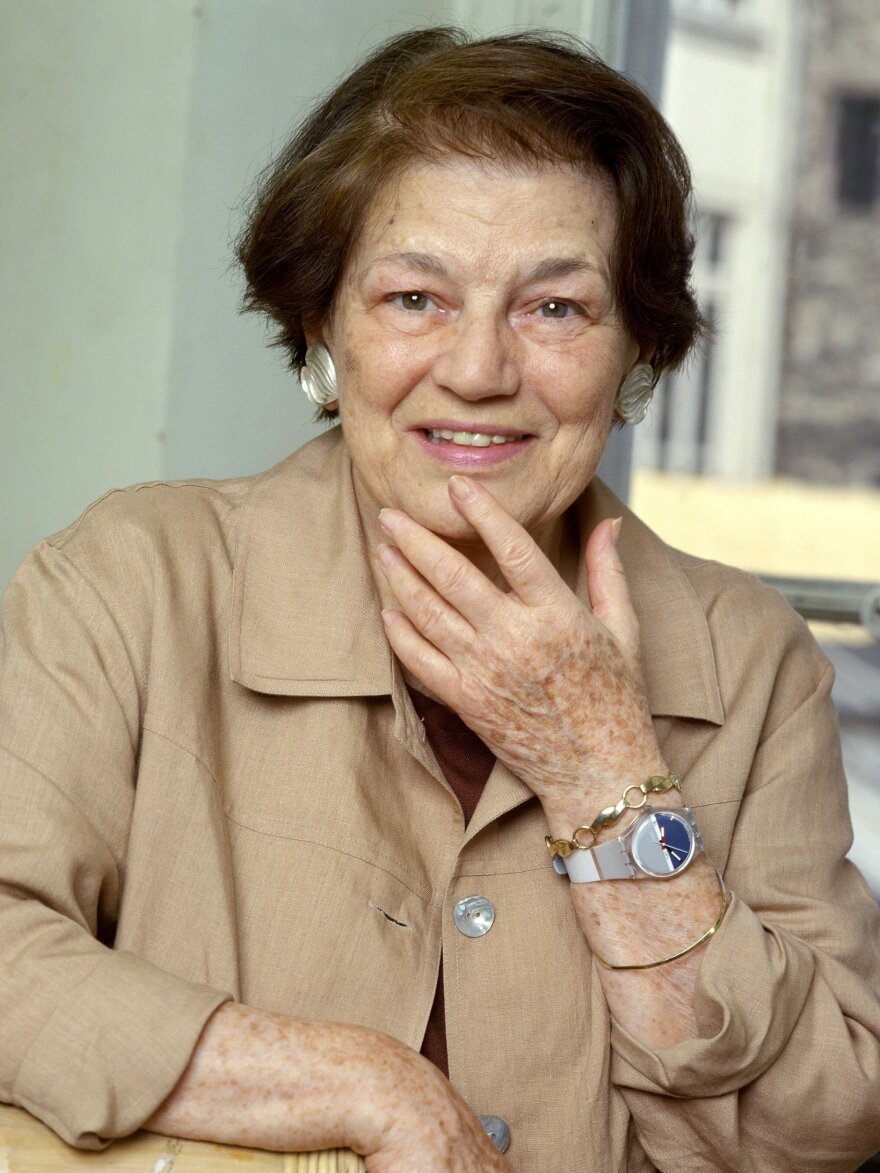Unless you've been a devoted reader of New Yorker short stories for the last 60 years, you may not know the name Mavis Gallant. The magazine published more Gallant stories than almost any other writer, except John Updike.
She died Tuesday in Paris at age 91.
Gallant has been compared to Eudora Welty and Anton Chekhov, and her fans include the writers Russell Banks and Jhumpa Lahiri. She had moved to Paris from Montreal in 1951 to write fiction. It was part of a private gamble she recounted several years ago:
"I decided I would send three stories to The New Yorker one after the other, and ... if they rejected the whole lot, I was going to give up the idea completely. And the first one they sent back and said, 'Have you anything else you could show us?'"
The next one she sent opened the door to The New Yorker — and to a Europe recovering from the ruins of war.
Writing An 'Underground Map Of Europe'
Writer Michael Ondaatje has long admired Gallant. He says she captured the intimacy of lost souls wandering across a Europe in the throes of reconstruction.
"They're in transit," he says. "They're in waiting rooms. They're halfway across a bridge. They're overhead in balloons. ... And we get a very unusual underground map of Europe in the 20th century in her work. She's wonderful at creating a sense of place in Europe. You know, there's one essay where she talks about a chapel in Paris, and she talks about a 'small, dim chapel of gentle ugliness.' And in that kind of little, detailed landscape she's able to draw these lost souls that are seldom written about, not even by many European writers."
One of Mavis Gallant's best loved stories, "The Old Friends," takes place on a train. It's about an exchange between a young woman and a German government official who tries to pick her up while she teases him:
To make the conversation move faster, to tease, to invent, to build a situation and bring it crashing down she said, "No one's expecting me."
"Are you expected anywhere?"
"Oh, not until Monday. I live in Frankfurt."
He looked out the window for some time. He put the card in his pocket and sat with the tips of his fingers pressed together. "If no one's waiting for you," he said finally, "you could skip Salzburg and come on to Munich with me. I have some business there, so I'd be busy part of the day. But I'm free in the evening and it's a very lively place. We could go to a nightclub."
According to Gallant, a woman in the 1950s would never have recounted such an episode.
"These are the things you learn through men, as a woman," she said. "But I wouldn't have known that on my own because no woman friend would ever have said to me, 'You know, I met this fellow on a train,' because these are things women keep to themselves."
A Literary Choreographer
Her stories mostly started with little more than a fleeting image.
"It's an image like a movie, like a still from a film. Black and white, really," she said. "It's of people caught in a situation, and this has to open in some way. But sometimes it doesn't appear in the story at all, the first image. But the thing that's interesting is that I know who these people are. I know all about them. It's very funny — I know their names; I know what they're up to. And it develops from that. But that doesn't mean it's done in a hurry at all. It's very slow."
According to Michael Ondaatje, the exquisite detail of Gallant's stories is what set her apart.
He says, "This is what distinguishes her from all the other writers of our time, I think. She says at one point, 'I'm uncertain about every line I write and I'm uncertain until I get readers.' And I think, for some writers, a kind of greatness emerges from that tentativeness about their work. She tries to be as good as she can. And as a result, I think it pushes her to become flawless in some way. So when we read the stories, we are dazzled by the choreography of her work."
Freedom In Solitude
Gallant spent her life in her art — which meant that she mostly lived alone.
"I was always better off on my own," she said. "I'm an only child. I felt better. I remember once I went away for three months so that something would clear up and I could come back to Paris on my own and so on. And people said to me, 'Oh, you must be in love. You look marvelous.' It was freedom."
As she aged, she found it more and more difficult to get around, and without getting around she couldn't continue to gather the essential material she needed to make her stories. In one conversation, she said that when it was no longer possible for her to go out, she would just go away.
Copyright 2021 NPR. To see more, visit https://www.npr.org.






